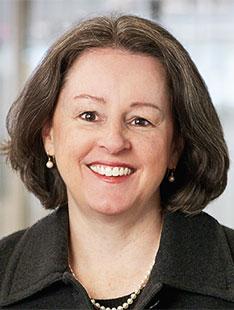Carolyn Ainslie is now in her 10th year as Princeton’s Treasurer and Chief Financial Officer. She is a superb administrator, a nationally recognized leader in her field, and a terrific public speaker. I asked her to share some insights into Princeton’s financial model.—C.L.E.
One of the most frequent questions I get when introduced as Princeton’s CFO is, “What do you do with all that endowment?” It’s one of my favorite questions because the answer goes to the heart of Princeton University and to the extraordinary loyalty and generosity of its many generations of alumni.
The endowment is fully deployed and actively supports the University in accomplishing its daily mission—making it possible for students from all backgrounds to live and learn with exceptional faculty, and for those faculty to teach and conduct cutting-edge research on a vibrant residential campus.
If the endowment totals over $20 billion and the annual operating budget is $2 billion, are we fully utilizing this precious resource? The simple answer is yes. The total payout from the endowment in this fiscal year is a little over a billion dollars, which supports about half of the annual operating budget.
The endowment is made up of more than 4,000 funds that have been established over Princeton’s 270-year history. The first endowment on record dates back to the 1700s, and it was created to provide a scholarship that has supported and continues to support financial aid for undergraduates.
Over the years we have sustained and enhanced this long-standing commitment to access and affordability. Today, between 20 to 25 percent of the endowment supports financial aid for undergraduate and graduate students. The University’s need-blind admission process and its need- based financial aid program make it possible for admitted students regardless of financial circumstances to attend Princeton and graduate with little or no debt. Twenty-two percent of this fall’s freshman class are Pell-eligible (family incomes typically less than $50,000). For these students and a number of others, financial aid covers their entire student bill, including room and board, with no contribution required or expected from their parents. The endowment makes this generous financial aid program possible.
Approximately 20 percent of the endowment supports faculty and their trailblazing contributions to scholarship on this campus and to the world of ideas. The University has more than 200 endowed professorships, which are used to honor the most distinguished of Princeton’s professors. Many of these endowed professorships were given by loyal alumni to further the intellectual and research aspirations of the faculty, and to broaden the University’s reach in new areas of discovery. Endowed professorships help the University recruit and retain the best faculty.
Students and faculty engage in their studies on a beautiful campus that supports learning and discovery for all Princetonians. Approximately 12 percent of the endowment supports the renewal and maintenance of these physical spaces that enable Princeton to thrive. The University is disciplined in allocating endowment payout to support the operating and maintenance costs of new facilities to ensure that there is a source of ongoing funding to provide for its facility operations and stewardship. The endowment also supports the library and its acquisitions, a broad array of academic programs, and campus life priorities including athletics and religious life. When taken together, these varied and vital uses of our endowment support 50 cents of every dollar spent every day at Princeton in support of our students, faculty, programs, services, and spaces.
And it is not just about today! An endowment by definition has an obligation to support its purpose indefinitely into the future. Our enduring mission requires a steady, predictable budget environment. The endowment spending needs to take into account that we have good years and bad years and that many depend on it, including the donors who contributed gifts and the students and faculty of today and tomorrow.
This requires an investment strategy and a payout policy that balances our commitment to support current generations with our responsibility to maintain an equivalent level of support in the future. All of the uses described above typically grow each year. This year, we are paying out 5.5 percent of the endowment’s market value. If you estimate inflation of 2 to 3 percent, this will require an investment return of at least 7.5 to 8.5 percent to keep up with ongoing obligations every year. This is an audacious goal, particularly with market volatility. Our investment team at Princo has achieved total investment returns averaging 12 percent per year over the last 20 years, even with the financial meltdown of 2008. This performance, superb by any standard, places us in the top 1 percent of our peers.
We also rely on the steadfast support of our alumni to help Princeton remain at the cutting edge of teaching and learning. Continued growth in our endowment through new gifts plays a crucial role in our mission to advance domains of knowledge, ensure the affordability of a Princeton education, and make a lasting impact in service of the nation and the world.
Whenever I hear the age-old question about the role of Princeton’s endowment, I can confidently declare that the endowment is at work!

